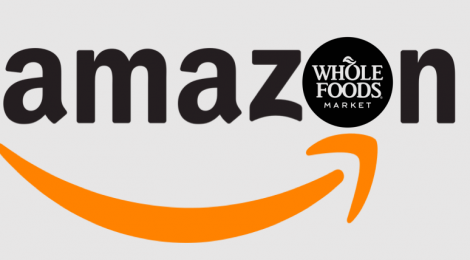
On Amazon’s Entrance into the Grocery Business—A Legal Analysis
On June 16th, 2017, Amazon Inc. announced its $13.4B purchase of Whole Foods. Should the deal be approved by Whole Foods shareholders, it would launch Amazon into the grocery business and provide the logistical capability to be within an hour’s drive of 70 percent of American households.[1] While integrating internet technology into an industry that has been slow to innovate is promising for the consumer at first glance, it comes with the risk of rising prices and of overwhelming Amazon’s competition. Because these remain possibilities in the Amazon-Whole Foods case, the antitrust implications ought to be considered. Congressman David Cicciline (D-RI) took a step in the right direction, calling for a Senate Regulatory Committee hearing on the issue. Overall, although Amazon’s antitrust tendencies occupy a grey area, it is crucial that they are understood; specifically, the characteristics of a predatory pricing scheme and the possibility of a tying claim can no longer be ignored.
The boundaries of a monopoly and the threshold for jumpstarting antitrust legislation can be hazy at times. The landmark legal precedent for all antitrust dealings originated with the Sherman and Clayton Antitrust Acts of 1890 and 1917. According to Section 7 of the Clayton Antitrust Act, mergers or acquisitions are prohibited when they “may substantially lessen competition, or tend to create a monopoly.”[2] This principally relates to horizontal acquisitions: those between direct competitors in the same industry. Whole Food’s sale of upscale grocery at brick-and-mortar stores certainly isn’t a competitor to Amazon’s signature online marketplace.
But “traditional” cannot be used to describe Amazon’s reach. The company has launched itself into every aspect of society imaginable, from voice-assistance (Alexa) to newspaper coverage (The Washington Post). In that light, an acquisition of Whole Foods needs to be considered as a partially horizontal one. Amazon now has a market cap of 474 Billion Dollars, and benefits from such an economy of scale in its operations that it can overcome many barriers of entry. As Amazon expands, so does its number of competitors, spanning a broad range of industries.
In Amazon’s purchase of Whole Foods, another possibility needs to be analyzed: the creation of a predatory pricing scheme. Predatory pricing refers to the pricing of goods at a level so low that a market becomes anticompetitive and competing firms can no longer operate. However, the line between predatory pricing and a hyper-competitive market is often blurred. One illuminating case regarding predatory pricing took place in Matsushita Electric Industrial Co. v. Zenith Radio Corp (1974). Zenith Corporation was a consumer electronics manufacturer that sued the Japanese firm Matsushita Electric, now Panasonic. Zenith claimed that Matsushita and other Japanese electronics companies colluded to create artificially low prices for products in American markets “in order to drive American companies out of business.”[3] The case reached the Third Circuit Court of Appeals, and eventually the Supreme Court after it granted certiorari. The Court ruled in favor of the Japanese firm, claiming that the existence of a predatory pricing scheme is “inherently uncertain.”[4] It is never entirely clear that competition is impeded when prices are drastically lowered; furthermore, the Court illustrated its hesitancy when trying the issue, affirming that “claims of threatened injury from predatory pricing must be handled with care.” The Supreme Court reaffirmed the Matsushita Electric decision in Brooke Group Ltd. v. Brown & Williamson Tobacco Corp. (1993). Brooke Group was a cigarette company that recently introduced generic packs at a “30% discount” that were still profitable; when rival firm Brown & Williamson also developed generics, but sold them below-cost, Brooke Group alleged that their rival created an unfair pricing scheme. They claimed that losses in generics would be recouped by the company’s “raising prices on branded cigarettes.” Once again, this seemingly compelling argument was rejected by the Supreme Court, which claimed below-cost pricing “is not sufficient [to demonstrate] injury to competition.” Although raising prices on branded cigarettes in this scenario could indicate supracompetitive pricing—pricing above what can be sustained in a competitive market—the burden falls on the plaintiff to formulate how prices would eventually rise in the marketplace.
The logic behind this decisive stance by the Court can be applied to Amazon and its intended purchase of Whole Foods. There is no doubt that in a few years time, Amazon will strategize and use its position in the physical grocery business to severely undercut rivals – especially those in the upscale food business. But even if Amazon decides to sell groceries below-cost, that would not constitute clear proof that it is creating an uncompetitive market for groceries. In an industry whose margins are already razor-thin, Amazon could claim that prices would only improve for consumers. Overall, as a result of the Supreme Court’s very particular and unyielding requirements for what constitutes predatory pricing, antitrust law has become very complex.
Nonetheless, case law from the internet age may provide some answers. In U.S. v. Microsoft Corp. (2001), twenty U.S. states accused Microsoft Corporation of violating the Sherman Antitrust Acts.[5] The American government argued that preprogramming and licensing the Internet Explorer browser in all copies of Windows should be regarded as an anticompetitive practice with the intention of building a monopoly. The case eventually settled, with Microsoft forced to share its Internet Explorer source code to third party developers. But the decision in effect allowed for the continued bundling of operating systems with browser software, merging two formerly separate entities – and goods – into one. This complicated resolution of the case illustrates that most antitrust cases are not single-handedly judged in the favor of the plaintiff or the defendant. Drawing from this conclusion, Amazon is neither blatantly violating antitrust law, nor is it perpetuating a perfectly competitive market.
The above case also illustrates another legal development: the possibility of a tying claim. This is an anti-trust violation where a monopolist in one industry forces its customers to purchase from a specific firm in a different market.[6] Microsoft was bundling Internet Explorer with its copies of the Windows operating system, and forcing customers of one product to receive the other by default. A similar parallel can be drawn with Amazon. Amazon is pouring resources into its delivery and logistics network, pushing for same-day delivery and working with advanced drone technology for grocery delivery. If the deal is approved without any regulator screening, Amazon can offer grocery customers who rely on its distribution centers only Whole Foods products, which is grounds for a tying claim. On the other hand, it needs to be recognized that Amazon may be free to allocate all purchases exclusively through Whole Foods, given that it is an acquisition. More research needs to be done regarding the legal precedence and validity of a tying claim.
Amazon has quietly built itself into a corporate giant, and its Whole Foods acquisition only recently raised concerns about its size. It certainly deserves scrutiny regarding its business practices and the competitiveness of the markets it engages in. Although legal precedence shows the difficulty of faulting Amazon for a predatory pricing scheme, the U.S. v. Microsoft Corp. case lends credence to the possibility of a tying claim. Amazon has the potential to vertically integrate across its platform, which could have devastating effects for competing firms around the world.
[1] Bytes, Washington. “Will Amazon-Whole Foods Survive Antitrust Scrutiny Under Trump?” Forbes. July 03, 2017. https://www.forbes.com/sites/washingtonbytes/2017/07/03/will-amazon-whole-foods-survive-antitrust-scrutiny-under-trump/#63bf3a1b8e1e.
[2] ”Mergers.” Federal Trade Commission. June 11, 2013. https://www.ftc.gov/tips-advice/competition-guidance/guide-antitrust-laws/mergers.
[3] Khan, Lina M. . “Amazon’s Antitrust Paradox.” Yale Law Journal 126, no. 3 (January 2017). http://www.yalelawjournal.org/note/amazons-antitrust-paradox#_ftnref87.
[4] Jorde, Thomas M. . “Summary Judgment in Antitrust Cases: Understanding Monsanto and Matsushita.” The Antitrust Bulletin, Summer 1991, 271-323. http://scholarship.law.berkeley.edu/cgi/viewcontent.cgi?article=1845&context=facpubs.
[5] United States v. Microsoft Corp. (D.C. Circuit 2001).
[6] ”Competition And Monopoly: Single-Firm Conduct Under Section 2 Of The Sherman Act : Chapter 5.” The United States Department of Justice. https://www.justice.gov/atr/competition-and-monopoly-single-firm-conduct-under-section-2-sherman-act-chapter-5.




